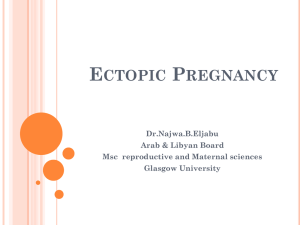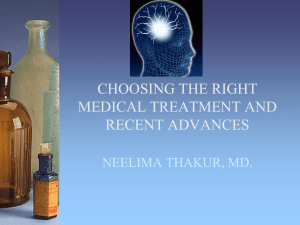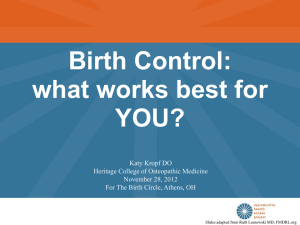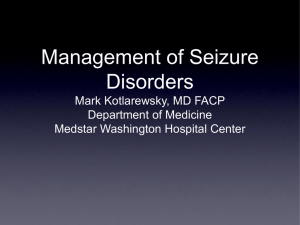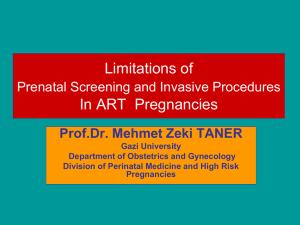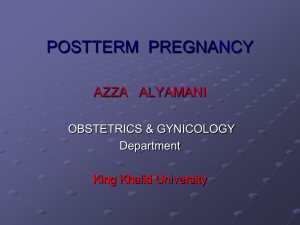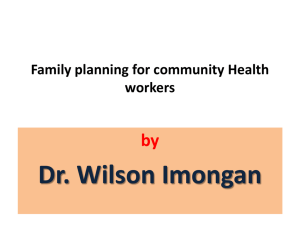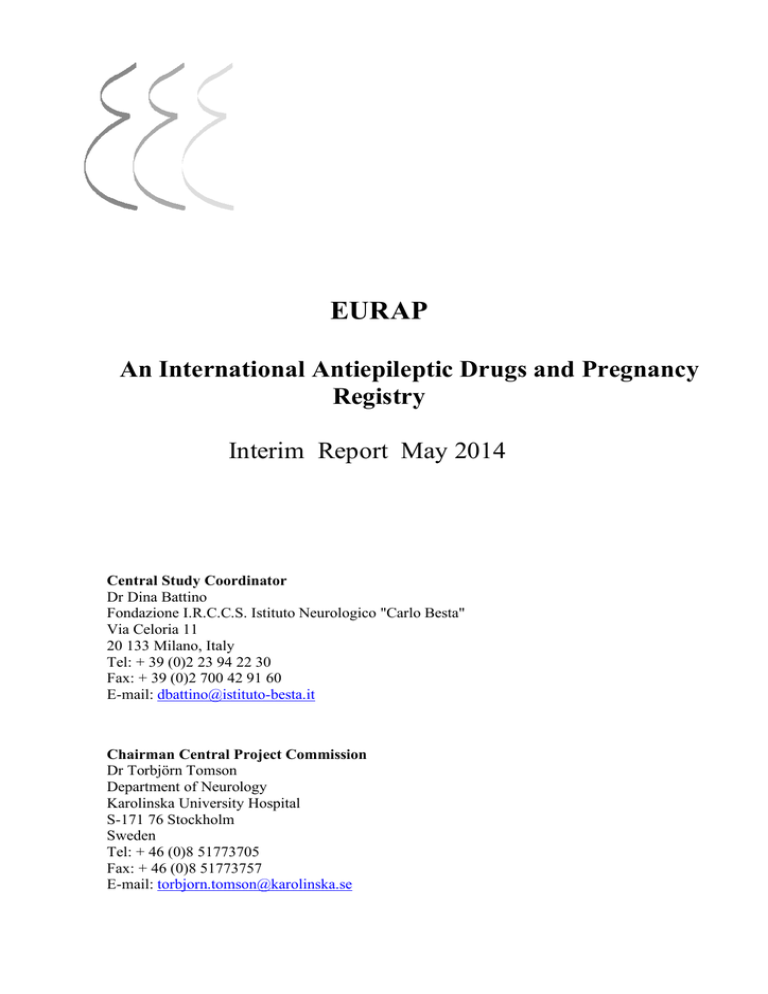
EURAP
An International Antiepileptic Drugs and Pregnancy
Registry
Interim Report May 2014
Central Study Coordinator
Dr Dina Battino
Fondazione I.R.C.C.S. Istituto Neurologico "Carlo Besta"
Via Celoria 11
20 133 Milano, Italy
Tel: + 39 (0)2 23 94 22 30
Fax: + 39 (0)2 700 42 91 60
E-mail: dbattino@istituto-besta.it
Chairman Central Project Commission
Dr Torbjörn Tomson
Department of Neurology
Karolinska University Hospital
S-171 76 Stockholm
Sweden
Tel: + 46 (0)8 51773705
Fax: + 46 (0)8 51773757
E-mail: torbjorn.tomson@karolinska.se
BACKGROUND
All old-generation antiepileptic drugs (AEDs) are considered to be teratogenic and AEDs are among the
most common causes of adverse effects to the foetus. The risks associated with the treatment of epilepsy
during pregnancy is therefore of major concern to all women of childbearing potential with epilepsy. The
information on the comparative teratogenicity of these AEDs in humans is, however, conflicting, mainly due
to inadequate sample size and methodological differences between previous studies. The teratogenic
potential of newer AEDs is even less known, a situation that prevents a rational approach to AED treatment
in women of childbearing potential.
To address this problem, it is necessary to compile more information on outcome of pregnancies following
maternal exposure to AEDs. Such information is needed to provide pre-pregnancy counselling concerning
teratogenic risks, and possibilities for specific prenatal monitoring, including prenatal diagnosis of foetal
disorders associated with specific medications. Given the current number of available AEDs and
combinations, very large numbers of pregnancies have to be evaluated in order to establish the safety of each
regimen. Large denominators are also needed because of the qualitative diversity of the main endpoint of
outcome, major congenital malformations.
A number of independent groups with experience and interest in maternal and foetal well-being in
association with maternal AED use have agreed on a prospective international multi-centre study of
pregnancies with AEDs. Data from all participating groups are shared in a Central Registry of Antiepileptic
Drugs and Pregnancy (EURAP). EURAP was established in the first centres in some European countries and
has since then gradually expanded to include more centres and countries now involving also Asia, Oceania,
Latin America and Africa.
OBJECTIVE OF EURAP
The primary objective of EURAP is to evaluate and determine the comparative risk of major foetal
malformations following intake of AEDs (old and new) and their combinations during pregnancy.
METHODS
EURAP is a prospective and retrospective observational study. Women taking AEDs at the time of
conception, irrespective of the indication, may be included. To avoid selection bias, only pregnancies
recorded before foetal outcome is known and within week 16 of gestation are included in the prospective
risk assessment. Cases ascertained later in pregnancy are recorded as retrospective cases, as they may
provide signals, but are not included in the comparative risk evaluation.
Information on patient’s demographics, type of epilepsy, seizure frequency, family history of malformations,
drug therapy and of other potential risk factors is obtained, and follow-up data are collected once at each
trimester, at birth and at one year after delivery.
Networks of reporting physicians have been established in countries taking part in the collaboration. During
the course of the pregnancy, and the follow-up time after delivery, the participating physician enters data
into five Subforms (Subforms A-E) for each patient.
Subform A is completed on enrolment of the patient, Subform B after the first trimester, Subform C after the
second trimester, Subform D within three months after delivery, and Subform E within 14 months after
birth. Immediately after completion, each Subform is submitted to the national coordinator for review. The
national coordinator transfers the reviewed and accepted Subform to the Central EURAP Registry in Milan,
Italy.
EVALUATION OF OUTCOME
The physician records descriptively abnormalities observed in the offspring. The final assessment and
classification of the type of malformation is the responsibility of the Central Project Commission (CPC). In
order to facilitate a uniform and objective assessment, reports of malformations are assessed regularly by an
outcome assessment committee, which is kept blinded with respect to the type of exposure.
INTERIM REPORT
EURAP was implemented in the first two countries in Europe in 1999 and has since then grown rapidly with
countries participating from Europe, Australia, Asia, South America and Africa. This development is
reflected by increasing numbers of enrolled pregnancies. The development since 1999 is illustrated in Fig. 1.
Fig 1. Number of Participating Countries and Pregnancies Reported to the Central Registry by June
2014.
The present report is based on data available in the Central Registry by July 14th, 2014. At that time
more than 900 reporting physicians from 42 countries had contributed cases to the Central Registry.
Countries that had been active are listed in Table 1.
Table 1. Countries that have Contributed with Pregnancies Reported to the Central Registry of
EURAP (n=42).
COUNTRY
Albania
Argentina
Australia
Austria
Belarus
Belgium
Chile
China
Croatia
Czech Republic
Denmark
Emirates
National Coordinator
(or referring physician*)
Jera Kruja*
Silvia Kochen
Frank Vajda
Gerhard Luef
Halina Navumava*
Dick Lindhout & Eugène van Puijenbroek
Alejandro De Marinis
Weiping Liao
Dinko Vitezic
Jana Zarubova & Robert Kuba
Anne Sabers
Istvan Ferencz *
Finland
France
Georgia
Germany
Guatemala
Hong-kong
Reetta Kälviäinen
Michel Baulac
Sofia Kasradze & Otar Toidze
Bettina Schmitz
Henry Stokes*
Patrick Kwan
Hungary
India
Israel
Italy
Japan
Lithuania
Macedonia
Netherlands
Namibia
Norway
Philippines
Poland
Portugal
Russia
Serbia & Montenegro
Slovakia
Slovenia
Spain
Sweden
Switzerland
Taiwan
Turkey
Ukraine
United Kingdom
Gábor Barcs
Sanjeev Thomas
Miri Neufeld
Luigi M. Specchio
Hideyuki Ohtani
Ruta Mameniskiene
Gordana Kiteva Trencevska
Dick Lindhout & Eugène van Puijenbroek
Herbie Burmeister*
Karl-Otto Nakken
Leonor Cabral-Lim
Joanna Jedrzejczak
Isabel Pires* & Luis Isidoro* & Elia Baeta*
Alla Guekht & Oksana Lokshina
Maja Milovanovic
Vladimír Safcák
Boštjan Čebular
Meritxell Martinez Ferri
Torbjörn Tomson
Barbara Tettenborn & Martin Kurthen
Chi Wan Lai & Alice Yu
Demet Kinay & Dilek Atakli
Dmitriy Kovalenko*
John Craig & Aline Russell
* referring physicians
Date of joining
the Registry
2002
2002
2000
2000
2008
2002
2002
2006
2002
2001
2000
2008
2003
2000
2000
2000
2003
2002
2001
2001
2000
2000
2001
2002
2001
2002
2012
2000
2003
2001
2001
2004
2002
2002
2002
2001
2000
2001
2004
2000
2006
2001
By the cut-off date for this report (July 14, 2014), 19,848 pregnancies had been entered into the central
database. Of these, 9,156 pregnancies are excluded from the present interim report for reasons explained
here below:
1.
2.
3.
4.
5.
6.
7.
8.
9.
Pregnancies that failed to meet inclusion criteria (n= 113).
Lost to follow-up, including those failing to submit sub-forms within preset deadlines (n= 2,257).
Pending pregnancies, awaiting updates or corrections of different sub-forms (n= 1,043).
Ongoing pregnancies, updated and corrected (n= 783).
Retrospective, but completed and corrected (n=3,550). Among these, there are true retrospective
pregnancies i.e enrolled after 16th week of pregnancy (n=3,343) and a further two hundred and eight
pregnancies (n=208) that otherwise met our criteria for prospective pregnancies since they were
recruited within 16th week, but which patients had an ultrasound examination performed before
enrolment.
Retrospective, i.e. initially classified as prospective pregnancies but re-classified as retrospective
cases because one or more CRF subforms were submitted after the set deadlines (n=327).
Unclassifiable i.e. cases for which it was impossible to determine if there was a malformation or not
(n=40). This includes 1 stillbirth with unknown fetal status, induced abortion with insufficient
information on fetus (n=7), anomalies in livebirths where the information was insufficient to
determine if qualifying for malformation diagnosis (n=28), 1 incomplete spontaneous abortion with
unclear results of biopsy and 3 perinatal deaths in premature births (<35 gestational weeks) with
anomalies difficult to classify as congenital or due to prematurity.
Not yet classified, i.e pregnancies which classification is pending as well as pregnancies which
became completed after the last time we sent the database to the OCC, regardless if they contained
some malformations or not (n=199).
Treatment changes between different AEDs or mono- to polytherapy or vice versa during the first
trimester (n=844).
Thus in total 10,692 prospective pregnancies (enrolled at the latest during the 16th gestational week and
before outcome is known) are included in this report.
The classification of the epilepsy among the prospective pregnancies is given in table 2. Epilepsy was the
indication for treatment in all but 92 (1%) of the pregnant women.
Table 2. Classification of the Epilepsy in 10,692 Prospective Pregnancies.
Epilepsy
Localisation-related
Generalized
Undetermined
Missing information
No epilepsy
Total
N
5,703
4,361
338
198
92
10,692
%
53.3
40.8
3.2
1.8
0.9
100
The maternal age among prospective cases was 29.8 ±5.1 years (mean±SD), ranging from 14 to 46 years.
The women were of Caucasian ethnicity in 88% and of Asian in 8%.
Gravida for each pregnancy is presented in Table 3.
Table 3. Number of the Pregnancy in Prospective Cases.
Gravida
1st pregnancy
2nd pregnancy
3rd pregnancy
4th pregnancy
5th pregnancy
> 5th pregnancy
Not ascertained
Total
N
4,898
3,303
1,459
646
233
152
1
10,692
%
45.8
30.9
13.7
6.0
2.2
1.4
0.0
100
The outcome of the prospective completed pregnancies is presented in Figure 2. Out of the 231 induced
abortions, 34 were for chromosomal abnormalities and/or syndromes and 62 were for fetal indication
detected by prenatal screening (out of these, 50 cases were confirmed major malformations and 12 cases
were definitively classified as other abnormalities such as hydrops fetalis, molar pregnancies, blighted
ovum, fetal placental transfusion syndromes, fetal growth retardation, fetus papyraceus, fetal death for
unspecified causes, balanced translocation and insertion in normal individual,…etc).
Figure 2. Obstetrical Outcome of Prospective Pregnancies.
Of the pregnancies, 8,551 (80%) involved women on a single AED, 1,723 (16.1%) were on two AEDs
whereas 303 (2.8%) took three AEDs or more. One hundred and fifteen women (1.1 %) were not on AED
treatment during the 1st trimester. The exposure to the different AEDs in monotherapy among the
prospective pregnancies is presented in Figure 3.
Figure 3. Number of Prospective Pregnancies with Exposure to Different AEDs in Monotherapy.
There were 259 different AED combinations. The most frequently used combinations were lamotrigine
and valproic acid (n=225), lamotrigine and levetiracetam (n=154), carbamazepine and levetiracetam
(n=114), carbamazepine and lamotrigine (n=108), carbamazepine and valproic acid (n=77), carbamazepine
and phenobarbital (n=73), lamotrigine and topiramate (n=68), carbamazepine and clobazam (n=65),
clobazam and lamotrigine (n=48) and carbamazepine and topiramate (n=43) (Table 4).
Table 4. The Most Common AED Combinations.
lamotrigine + valproic acid
lamotrigine + levetiracetam
carbamazepine + levetiracetam
carbamazepine + lamotrigine
carbamazepine + valproic acid
carbamazepine + phenobarbital
lamotrigine + topiramate
225
154
114
108
77
73
68
carbamazepine + clobazam
clobazam + lamotrigine
carbamazepine + topiramate
clonazepam + lamotrigine
topiramate + valproic acid
levetiracetam + oxcarbazepine
levetiracetam + valproic acid
lamotrigine + oxcarbazepine
clonazepam + valproic acid
phenobarbital + valproic acid
phenobarbital + phenytoin
carbamazepine + clonazepam
lamotrigine + phenobarbital
lamotrigine + phenytoin
carbamazepine + vigabatrin
65
48
43
42
37
35
34
32
32
32
28
26
22
18
18
The number of pregnancies with exposure to different new generation AEDs taken in combination with
other AEDs are listed in Table 5.
Table 5. Number of pregnancies with different new generation AEDs in combination therapy.
Lamotrigine
Levetiracetam
Topiramate
Oxcarbazepine
Gabapentin
Zonisamide
Vigabatrin
Pregabalin
Tiagabine
916
499
290
178
56
39
37
18
8
TERATOGENIC OUTCOME
There were 520 major congenital malformations (MCM), 19 syndromic and/or monogenic cases and 60
chromosomal abnormalities (CHR) in the prospective cohort of 10,034 pregnancies as shown in Table 6
(658 spontaneous abortions are excluded).
Table 6. Pathological Outcomes.
Outcome
Outcome Classification
N
MCM
Multiple major
48
Isolated major
472
MCM
520
SYNDROMES or
MONOGENIC
CONDITIONS
19
CHR
60
Total
599
The 19 syndromic cases are Marfan’s syndrome (2), Noonan syndrome (2), inherited tuberous sclerosis (3),
Goldenhar syndrome (1), incontinentia pigmenti (2), inherited congenital glaucoma (1), inherited congenital
cataract (1), inherited craniosynostosis (1), Di George’s syndrome (1), bilateral hearing loss (1), X-linked
lissencephaly (1), Skeletal dysplasia/Dwarfism (1), X-linked ichthyosis (1) and Freeman Sheldon syndrome
(1).
In this report we will confine our analysis to the 520 MCM including 50 induced abortions, five stillbirths
and 14 neonatal deaths. Of the 451 live births, 46 cases of malformations were ascertained prenatally, 287
were first reported at birth and 118 within one year after birth.
Among the 520 cases with MCM, 98 were detected by ultrasound examination. Out of these 98, there were
45 induced abortions, four stillbirths, three perinatal deaths and 46 live births.
The 520 cases represent a malformation rate of 5.2% of all prospective pregnancies for which follow-up
has been completed (520/10,034).
The type of malformations is described in Table 7.
Table 7
In 382 out of 8,056 pregnancies with AED monotherapy one or more birth defects were observed (4.7 %),
as opposed to 135 out of 1,868 pregnancies with AED polytherapy (7.2 %) as shown in Table 8.
Table 8. In this table, 658 spontaneous abortions have been excluded from the denominator.
No AED
%
Monotherapy
%
Polytherapy
%
Total
MCM
3
2.7
382
4.7
135
7.2
520 (5.2%)
CHR
0
0.0
48
0.6
12
0.7
60 (0.6%)
Syndromes
0
0.0
15
0.2
4
0.2
19 (0.2%)
No malformation
107
97.3
7,611
94.4
1,717
91.9
9,435 (94.0%)
Total
110
100
8,056
100
1,868
100
10,034 (100%)
Outcome regarding the four most common monotherapies has been published in Lancet Neurology, June 6,
2011. Outcome in relation to exposure to individual drugs or specific drug combinations is not included in
the present report.
ORGANISATION, FUNDING AND SUPPORT.
EURAP is a consortium of independent research groups working on a non-profit basis. The project is
administratively organised by the Central Project Commission (CPC) with members representing different
geographical areas and disciplines. The project has been supported by educational grants to the CPC from
Eisai Pharmaceuticals, GlaxoSmithKline, Janssen-Cilag, Johnson & Johnson, Pfizer, Bial, SanofiSynthelabo and UCB Pharma. In addition, national and regional networks may receive support from the
same or other pharmaceutical companies.
APPENDIX
Central Project Commission
Dina Battino, Milano
Erminio Bonizzoni, Pavia
John Craig, Belfast
Dick Lindhout, Utrecht
Emilio Perucca, Pavia
Anne Sabers, Copenhagen
Sanjeev V Thomas, Trivandrum
Torbjörn Tomson, Stockholm, (chair)
Frank Vajda, Melbourne
Central Study Coordinator
Dina Battino, Milan
Scientific Advisory Board
Bernd Schmidt, Freiburg
Martin J Brodie, Glasgow
Outcome Assessment Committee
Elisabeth Robert-Gnansia, Lyon, France
Richard Finnell, Houston, Texas
Francesca Faravelli, Genoa, Italy
Chiara Pantaleoni, Milan, Italy


